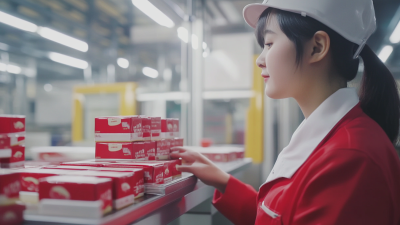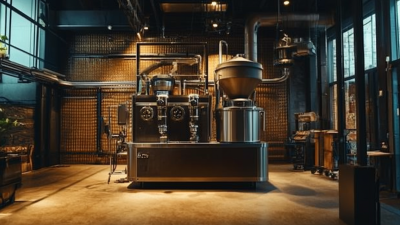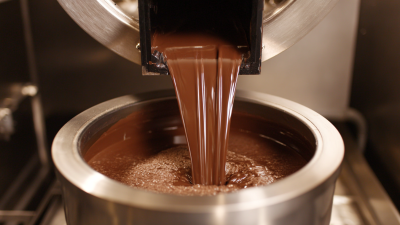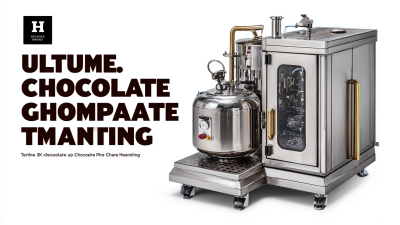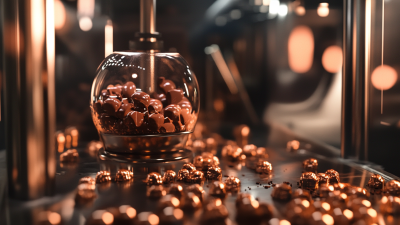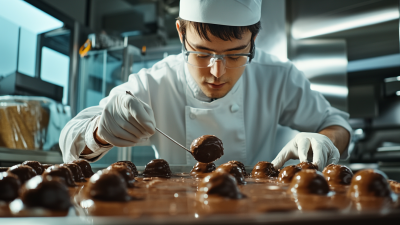In the ever-evolving landscape of modern confectionery production, the Chocolate Wrapping Machine has emerged as a pivotal tool that transcends traditional packaging methods. As chocolate manufacturers strive to enhance efficiency and product appeal, innovative uses of this machinery are revolutionizing the way chocolate is wrapped and presented to consumers. This tutorial will delve into the myriad applications of Chocolate Wrapping Machines, highlighting their roles not only in improving packaging speed and consistency but also in contributing to sustainability efforts through eco-friendly materials. By exploring the latest technological advancements and creative strategies employed by confectioners, we aim to provide valuable insights on how to leverage these machines to meet the demands of today's market while maintaining the artisanal quality that chocolate lovers cherish. Join us as we uncover the transformative potential of Chocolate Wrapping Machines in shaping the future of confectionery production.

In the competitive landscape of modern confectionery production, advanced wrapping machines have emerged as pivotal players in revolutionizing chocolate production. According to a recent report by Mordor Intelligence, the global chocolate market is projected to reach $161.56 billion by 2024, expanding at a CAGR of 4.2%. This surge necessitates innovations not only in chocolate formulation but also in the efficiency of wrapping processes. Advanced wrapping machines leverage automation and precision engineering to cater to this growing demand, ensuring that chocolates are packaged quickly and securely while maintaining product integrity.
One significant advancement is the implementation of smart technology in wrapping machines. These machines are equipped with sensors that monitor packaging conditions in real-time, adjusting parameters such as temperature and humidity to preserve the quality of the chocolate. Furthermore, Industry Research estimates that the demand for sustainable packaging solutions in the confectionery sector will witness a CAGR of 5.44% from 2020 to 2025. In response, manufacturers are incorporating eco-friendly materials into their wrapping processes, aided by cutting-edge machines designed to handle varied materials efficiently. This not only meets consumer expectations for sustainability but also streamlines production workflows, marking a new era in chocolate manufacturing.

Modern chocolate wrapping technologies have revolutionized the confectionery industry by enhancing efficiency and ensuring product quality. One of the key features of these advanced wrapping machines is their ability to operate at high speeds while maintaining precision. This not only increases the overall production capacity but also minimizes product waste. Many machines now incorporate sophisticated sensors that automatically adjust the wrapping parameters based on the size and shape of the chocolates, ensuring a perfect fit every time.
In addition to speed, contemporary chocolate wrapping machines boast versatility. They can handle various wrapping materials, including foil, paper, and biodegradable films, catering to the growing demand for eco-friendly packaging solutions. Furthermore, these machines often come equipped with user-friendly interfaces that allow operators to easily customize wrapping designs and functionalities. This adaptability not only aids in quick product line changes but also helps manufacturers stay ahead in a competitive market by offering distinctive packaging options that appeal to consumers.
| Feature | Description | Efficiency Gain (%) | Common Applications |
|---|---|---|---|
| Automated Wrapping | Utilizes robotic arms for packaging chocolate products quickly and uniformly. | 30% | Chocolate bars, truffles |
| Flexible Packaging | Adapts to different shapes and sizes, allowing for diverse product offerings. | 25% | Assorted chocolates, seasonal shapes |
| Heat-Sealing Technology | Ensures airtight sealing to preserve freshness and quality. | 20% | Chocolate bars, fudge |
| Smart Sensors | Monitors packaging quality in real time to reduce waste. | 15% | Quality control in production lines |
| Eco-Friendly Materials | Utilizes biodegradable and recyclable wrapping materials. | 10% | Sustainable product lines |
The confectionery industry is evolving rapidly, not only in terms of the sweets produced but also in the materials used for packaging. With increasing awareness of environmental issues, sustainable practices are becoming a cornerstone of modern chocolate production. Eco-friendly materials, such as biodegradable films and recycled paper, are gaining popularity among chocolate manufacturers. These innovations not only minimize waste but also enhance brand image, appealing to environmentally-conscious consumers.

Moreover, the integration of innovative chocolate wrapping machines has made it easier for producers to adopt sustainable packaging methods. These machines can utilize various eco-friendly materials without compromising the quality or aesthetics of the chocolate. For instance, advancements in technology enable precise wrapping techniques that reduce product damage and material waste. By embracing these sustainable practices, confectionery brands can significantly lower their carbon footprint while maintaining consumer satisfaction. The move towards eco-friendly packaging showcases a commitment to sustainability and a desire to protect the planet for future generations.
In the ever-evolving landscape of confectionery production, customization and branding have taken center stage, particularly through innovative chocolate wrapping machines. These machines are not just streamlining production; they are revolutionizing how brands interact with consumers. As highlighted in a recent market report, the global confectionery packaging market is poised to grow from approximately USD 10.6 billion in 2024 to an estimated USD 14.9 billion by 2033. This growth reflects a significant shift towards personalized experiences, with brands leveraging unique packaging designs to enhance consumer engagement.
The push for customization is evident in various innovative packaging strategies. For example, limited edition designs that resonate with cultural events or sports fandom have become increasingly popular. The application of personalization technologies in packaging allows brands to create tailor-made experiences that go beyond the traditional chocolate-buying journey. Moreover, with trends indicating a strong focus on sustainability in 2024, brands are not only prioritizing aesthetic appeal but also eco-conscious designs that reduce plastic usage. This dual focus on customization and sustainability reflects the industry's recognition of the need to connect with consumers on multiple levels, making every chocolate indulgence a memorable experience.
As the confectionery industry rapidly evolves, automation is playing an increasingly pivotal role in enhancing production efficiency and product quality. According to the "2024 Global Candy Industry Analysis Report," the demand for confectionery products has surged due to rising living standards and increasing consumer purchasing power. This trend presents an opportune landscape for modern chocolate wrapping machines, which are becoming essential for manufacturers striving to meet growing consumer expectations.
The advancement in wrapping technology not only facilitates faster production speeds but also improves the consistency and presentation of chocolate products. Innovative wrapping machines now incorporate smart automation features, enabling real-time monitoring and adjustments during the production process. As a result, companies benefit from reduced waste and optimized use of materials. These automated solutions are not merely trends; they are becoming a necessity in the competitive confectionery market, positioning manufacturers to respond to consumer preferences effectively while maintaining high standards of efficiency and sustainability.
